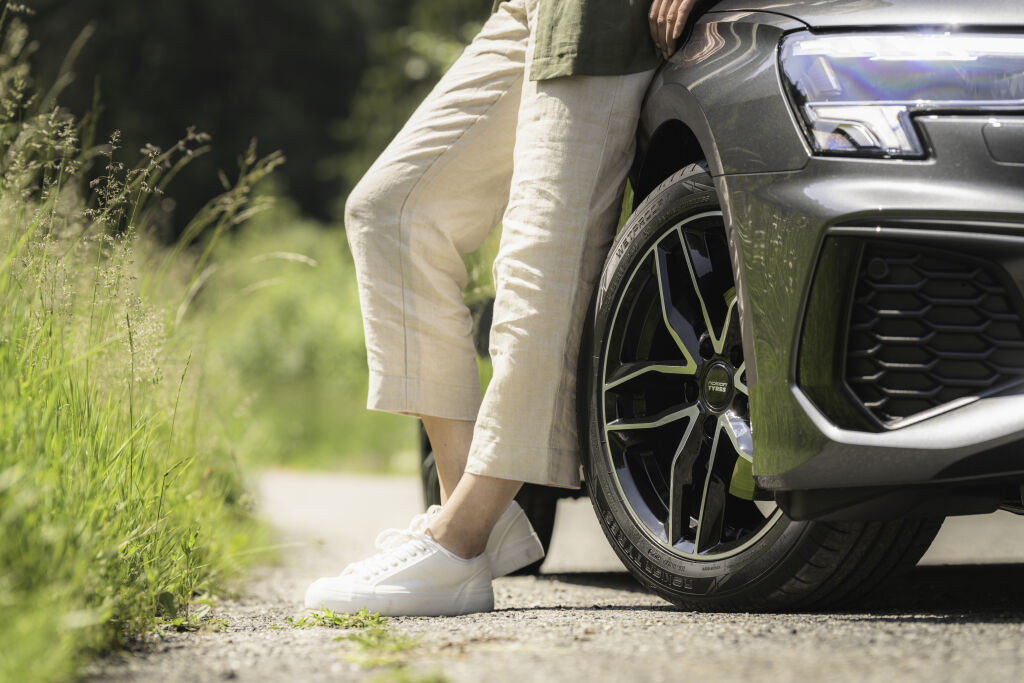
The tread depth of the tires tells you how safe it is to drive on them. Check the tread depth of your summer tires at home and upgrade to new tires if necessary.
The condition of car tires significantly affects driving safety. The importance of good quality tires is further emphasized, especially when driving conditions are demanding, such as in rainy weather or in winter when the roads are covered with ice and snow. One of the most important indicators of tire condition is the depth of the main grooves in the tread, also known as the tire tread depth.
What is tire tread depth?
Tire tread depth is measured from the wide main grooves in the center of the tire tread, which wear out over time as the tires come into contact with the road surface. The tread depth of brand new summer tires is about 8 mm. At this point, the grip of the tires is at its best, as the tires have not worn out due to driving.
The grooves' task is, for example, to guide accumulated water on the road, which increases the risk of aquaplaning. However, tire grip deteriorates as you drive more, and it is recommended to replace summer tires with new ones when their tread depth is less than 4 mm. Summer tires must be replaced with new ones at the latest when the tire tread depth is 1.6 mm or less.
Driving with tires worn beyond the 1.6 millimeter limit can result in fines and rejection during inspection, depending on the country. The smallest tread depth allowed by law for winter tires however, is greater than that of summer tires, at 3 mm. To be certain always check local laws and regulations where you live, or if you are traveling to different countries and you are uncertain if your tires tread depth are allowed by local law nor not.
How does summer tire tread depth affect driving?
Compliance with the law is not the only reason to replace worn summer tires with new ones. When the tire tread depth is below the recommended 4 mm limit, driving on them increases the risk of hydroplaning in rainy weather.
Consider the following points to prevent premature tire wear and extend their life:
- Correct tire pressures help both to reduce the rolling resistance of summer tires and to prevent their wear. In addition, driving on an underinflated tire exposes it to damage.
- Store tires correctly. For example, moisture, UV light, and various chemicals can weaken the tire even during storage. If you don't want the tires to take up space in your own garage or storage, you can take the summer tires to a tire hotel for the winter.
- The tread depth of summer tires should be checked on each tire. When changing tires, pay attention to the location of the tires and change the better, i.e., less worn tires, to the rear of the car. Change the position of the tires according to their condition to ensure a more even wear.
- Some faults with thevehicle can lead to premature or uneven tire wear. For example, improperly balanced tires or problems with the car's steering angles cause the tires to wear out unevenly.
- The age of your tires, as the rubber compound of the tire begins to weaken with age. Summer tires that have been in use for more than six years or tires that have been manufactured over 10 years ago should be replaced with new ones.
Also, consider the right tire selection. A high-quality premium tire lasts better than a cheap but inferior-quality tire. Investing in quality tires helps to save money in the long run due to lower fuel consumption and longer service life.
Test the tread depth of the tires with a two-euro coin
The tread depth of summer tires can be easily checked at home. No special tools are even needed for the procedure, although such are available for more accurate measurements. A simple two-euro coin is enough to check the sufficient tread depth.
The silver edge of the two-euro coin is about 4 mm wide, so you can use it to measure the tread depth. Place the coin in the main groove of the tire. There is still enough tread left on the tire if the silver edge of the coin is hidden. If the silver edge remains visible, it's a good time to consider getting new summer tires.

Check the tread depth of your summer tires
The tread depth of summer tires should be checked regularly, but especially in the spring, before changing tires. Make sure that the tread depth of the main grooves is at least 1.6 millimeters, for example, with a two-euro coin.
If you notice that your car's summer tires need replacing, easily find new tires with the Nokian Tyres tire search. Enter your car brand and model into the search and choose from high-quality summer tires, such as the Nokian Tyres Powerproof 1 or Nokian Tyres Wetproof 1, designed for the changing European summer conditions. The tire is designed specifically to prevent the risk of aquaplaning, and it also has a DSI tread depth gauge, which indicates when the tire has less than 4 mm of tread depth left.
Please remember that it is the driver’s responsibility to ensure their tires are safe and suitable for their vehicle and to follow the vehicle’s manufacturer´s guidelines for proper use and maintenance. Consult your closest Nokian Tyres dealer or your vehicle’s manufacturer for specific advice.


